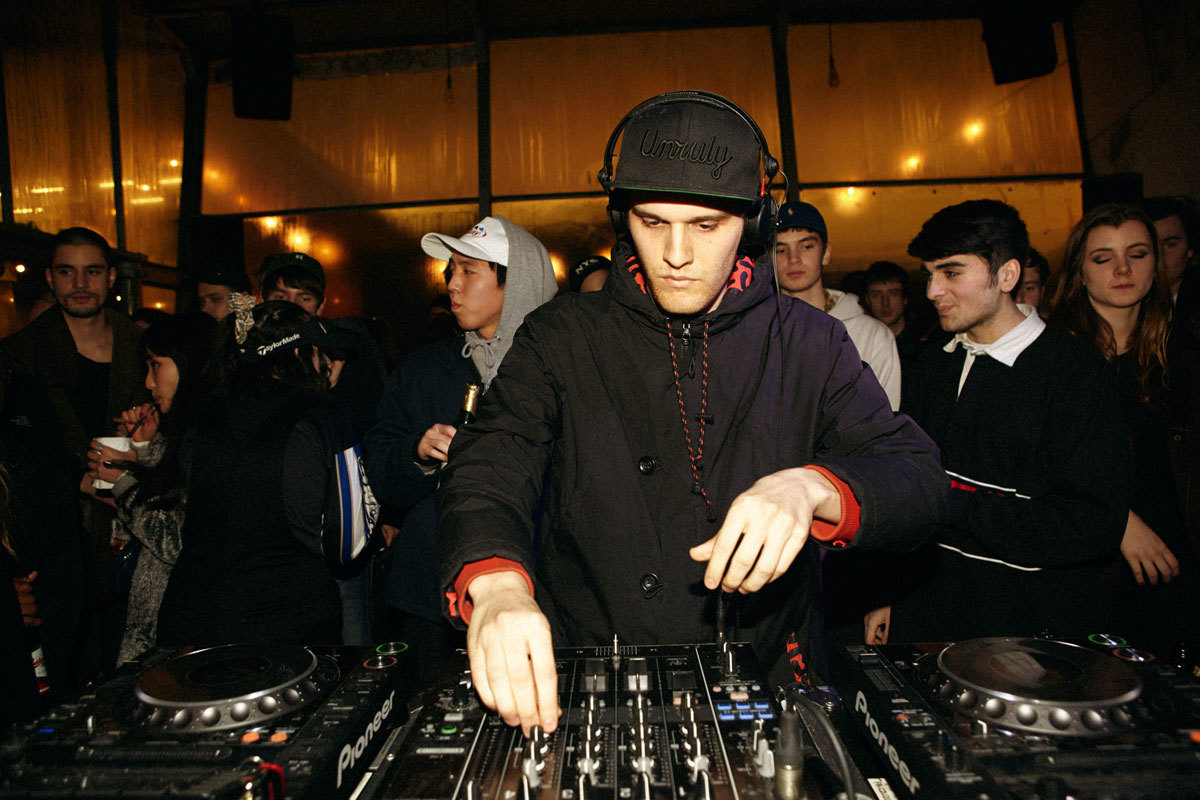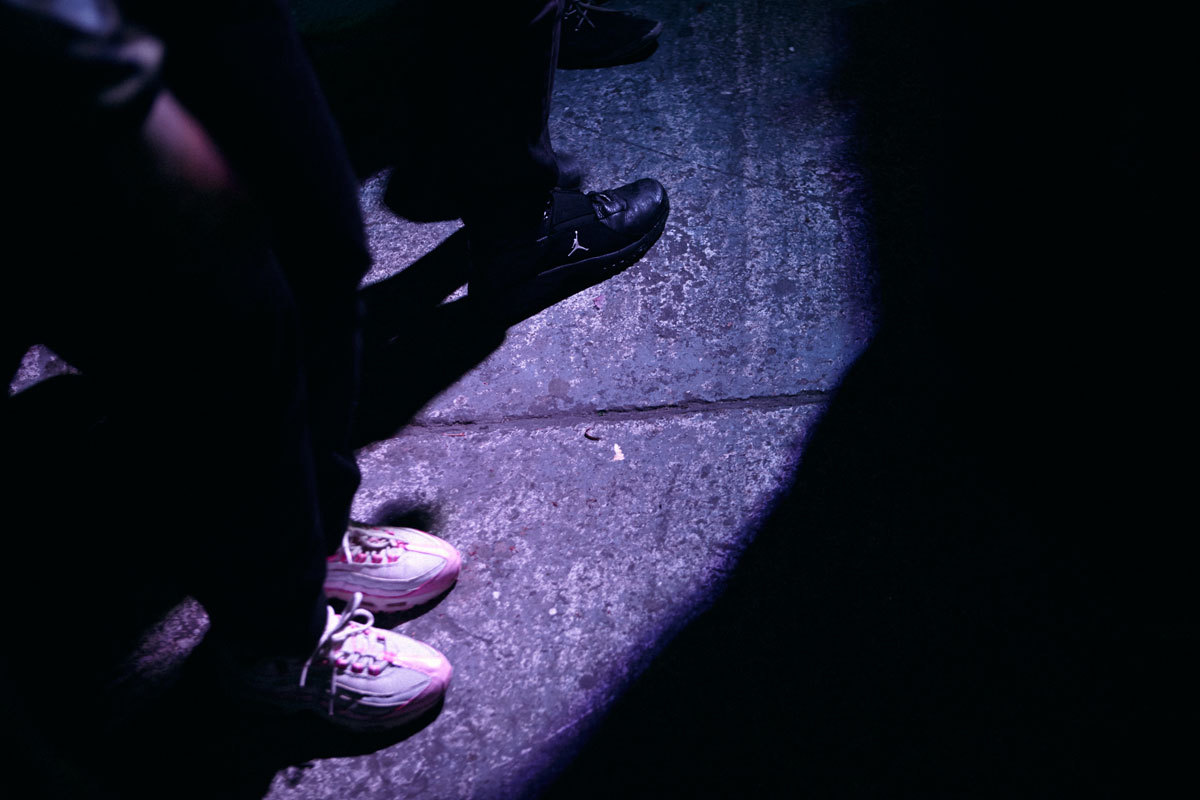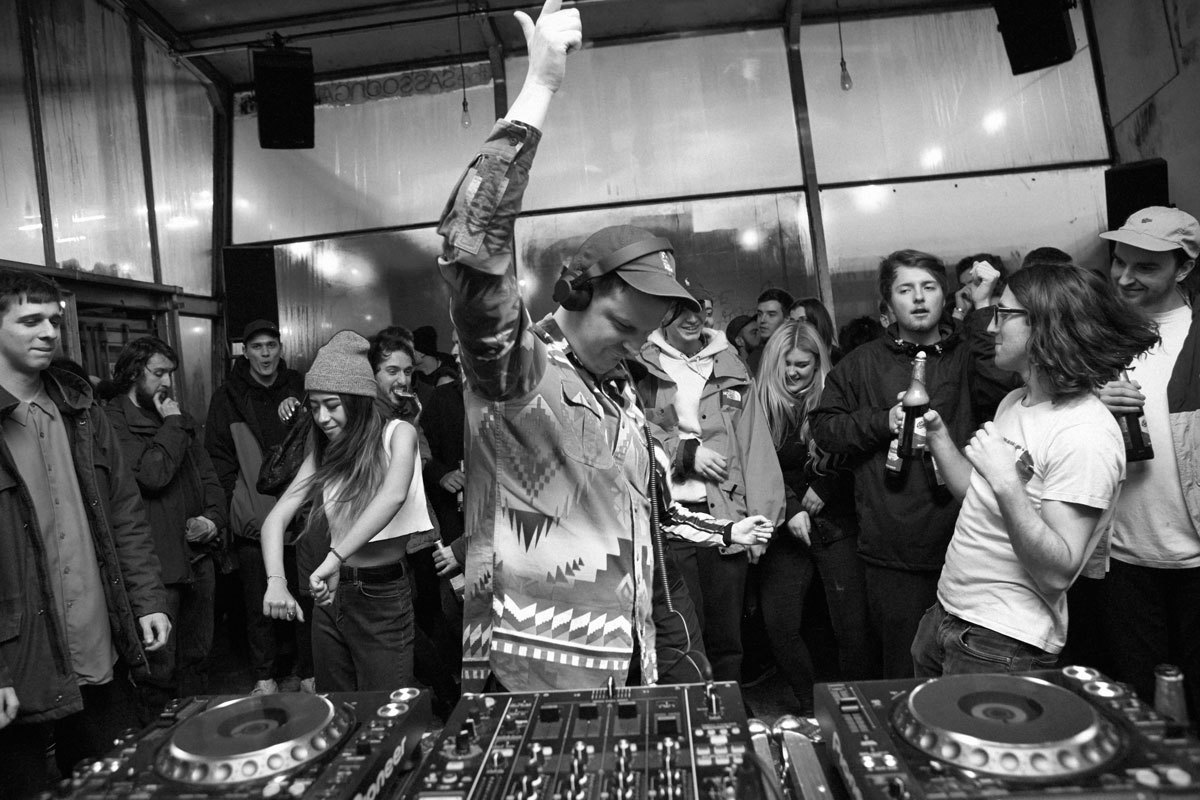It’s like being given the keys to the castle… then being asked to tidy it up. Every day working on the Boiler Room site has moments where the sheer volume of really, really good music that’s passed through the portals threatens to overwhelm — and it’s now our job to try and make some sense of it all. We need to find routes through the vast, sprawling archives and ever-proliferating new shows before they genuinely do overwhelm us, and we need to find new and more accessible ways to present it all to the world.
Of course there’s always a nagging instinct, an inner voice that says “it’s all music, what’s the problem?” It’s the instinct that makes people suspicious of critics, gatekeepers and anyone who delineates scenes — a very natural sense that any attempt to parlay creativity and culture into categories is a betrayal of the direct musical experience. And after all, Boiler Room itself has been driven by an instinct like this from the start: don’t worry about genre, just throw a party, get great DJs and acts, and the music will speak for itself.
But some time into Boiler Room’s fourth year, critical mass was reached. It could no longer function like this, not while continuing to expand and still doing justice to all the broadcasts that were piling up in the digital basement. The moment you start to look at more than a couple of shows, you start to see patterns opening up — lines of connection not just between existing sounds and scenes but between the communities that are watching and commenting on them from afar: what you might, if you were so inclined, call the beginnings of meta-scenes. But these lines are tangled, hidden, often almost impossible to follow even if you’ve got the time to unpick them.
Which is where I (and other Boiler Room staff new and old) came in. Our mission now is to build a site around the broadcasts. Not just to build editorial to give the shows context, but to make it somewhere that allows you simple and intuitive ways to dig deeper if you see something you like — which has meant us having to dig deep into the minutiae of how things connect ourselves. With literally thousands of hours of music, it’s hardly narrowing things down to say you want, say, “deep house.” But if you get super-specific and start mentioning names of artists, then you’re only going to get stuff you know already. You can’t just write an algorithm for this shit; even Amazon with their billions can’t automatically recommend you something you actually like, after all. To understand our archive, we’re having to learn a lot more about what genre actually is.
I’m a child of the rave era. I first went clubbing in 1990, when, in the UK, the white heat of the acid house big bang was starting to cool, but the galaxies of dance culture’s sub-genres hadn’t yet formed. For sure there were tendencies within the broader category of rave — indie-dance, Balearic, techno, the very beginnings of hardcore and progressive house and so on — but they all still smudged and merged. It was a melting point of reggae soundsystem influences, hooligan soulboy culture, crusty anti-authoritarianism, b-boy attitude, psychedelic-industrial weirdness and more, and more. By my reckoning it remained more or less like this until some point in 1993, when the centre couldn’t hold and the emergence of jungle and Goa trance in particular caused the explosion of sub-sub-genres that would define the years to follow.

As a dyed-in-the-wool geek, I tried my very best to keep track of the differences between handbag, hardbag, hard house, hardstep, techstep, breakstep, New Jersey and New York garage and all the rest — expanding ever outwards and backwards into the subsets of non-electronic music past and present, too. This became even more of an obsession as the 00s begun, and I started as a professional journalist. It happened that this was the time when it became received wisdom within the media as a whole that club culture was dead on its feet, that there was “no such thing as underground any more,” that any emerging subculture would instantly become subsumed and assimilated by the ever-accelerating pace of information and markets.
I instinctively bristled at this, feeling that it just couldn’t be true, but it took me a while to formulate a why. Ironically, genres that would alter the musical landscape dramatically — particularly grime and dubstep, but also the neo-folk/folktronica movement — were incubating at precisely this time, and a few years later, as these styles reached maturity, I worked out exactly what the flaw was with the argument I kept hearing. The thing is, I realized, that no matter how fast information flows and proliferates, no matter how frantically the forces of marketing and branding try to hoover up new sounds, the actual development of scenes can only happen at the speed of life. Those scenes can only develop their identities and accumulate meaning as fast as their participants accumulate life experience.
In the years since dubstep’s explosion from a scene of some thirty-odd Croydon lads to a global force, things regarding genre have only become more confused and confusing. The opening up of the most obscure corners of the past to archival and mining for source material, and of territories outside Europe and the US as ever-greater contributors to the scene, as well as the endless proliferation of more or less short-lived new hybrid sounds, mean that the sense of flux and glut can get ever more baffling. From Japanese new age to Nigerian psyche rock, it all becomes grist for the mill. Yet scenes and sounds remain vital, local, exciting, and on the dance floor you don’t think “what is this, and how does it relate to scenes X, Y and Z?” do you? You think, if you’re lucky, “this is fucking banging!”… or if you’re even luckier, you don’t think at all in the heat of the moment, just participate and enjoy.

So, coming over the moat into the Boiler Room castle, looking through the archives of music being mixed up and enjoyed by crowds, I’m constantly brought back to that realization that music genres and scenes are no more nor less than the sum of the lives of the people who form them. Arguing about precisely where the lines should be drawn around and between them is a fun game for critics and fans, and is sometimes necessary if you are arranging stock in a record shop, but is always ultimately a fudging and a falsehood that erases the multiplicities and idiosyncrasies within individual lives. And so what we are finding ourselves doing is going back through that archive, watching and tagging, watching and tagging, making sure that when you find a show that you like or an article that you’re interested in, you’ll be able to find others that connect to it less on the basis of spurious and contingent genre names and more on the basis of human experience.
That means, eventually, that you’ll be able to browse through the archive according to mood and function of the music – do you want it for the gym or the after-party, do you want something that’ll get you blissed-out or rowdy? But perhaps more importantly, we are making sure that our music is sorted by who within the BR organization is involved with it or loves it. From the very beginning, BR has been about the people who put the broadcasts together; while our presenters might get more or less affectionately ribbed in the chatrooms, they are the portal into what we are doing. Viewers understand instinctively that a certain person is going to give them a way into certain types of music, without having to disentangle and micro-categorize the eclecticisms of the DJ sets they present.
What we’ve realized is that it’s not just our original presenters, but everyone here that can serve this purpose. Almost every person within the BR organization has deep roots in music, as promoters, as writers, running labels or even as musicians themselves, and its the passionate and idiosyncratic tastes of each of these people that drives BR’s activities from day to day. This human touch beats algorithms hands down: there isn’t a supercomputer in the world that can match a human being for pattern recognition, and thus for drawing unlikely intuitive links between things that don’t superficially resemble one another but make nothing but sense when you juxtapose them. That’s why the art of the DJ is the defining art of our times, and what we’re doing is a kind of meta-DJing. We select the selectors, curate the curators, and then mix together the mixes as they come into our archives.

By mapping out those archives according to how they match our own tastes as individuals, we start to draw links that are more authentically about how music is consumed and understood – a little like how the best radio DJs can bring new records to life for you, but even less constrained by format. Even if you never search our site according to what Gabriel, or Sofie, or Raj, or Skinny are into, nonetheless those people’s tastes will be built into the way our archive is structured, alongside all the usual tags of genre, mood, location, club, label, artist and so on.
And this is what is most exciting about Boiler Room: from the very beginning it’s shown that people and their experiences are what’s important in music culture. This is an ambitious company, and it’s entirely possible that the flow of music could become a flood and the archive of unique sets and performances could expand exponentially. Even with the amount of musical information we already have swilling around we’re well into the realm of Big Data. But what we’re discovering every day is that this volume of data doesn’t need to lead to depersonalization, homogenization or reliance on shonky and impersonal predictive algorithms – and neither does the wider glut of information and fuzzing and smearing of traditional categories in the wider world – as long as the tastes and knowledge of real people are written into that data on the most basic level.
“Curation” is a buzzword that has risked being rendered meaningless by over-use in recent years – but as we tidy up the vaults of the castle, we’re starting to discover that as an art and a science, it’s really still in its infancy. Genres and revivals will come and go, and be argued about as long as there are humans to argue about them, but the information that makes up those genres offers all kinds of opportunities to understand music in other ways. The more the archive expands, the more links we can trace through it based on experience, emotion and understanding of very specific moments within it, not just on ultimately arbitrary critical categories. Boiler Room is discovery, sharing and study of music by the people, for the people!
Credits
Text Joe Muggs
Photography Piczo
